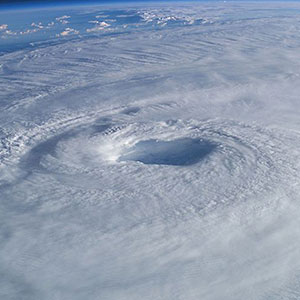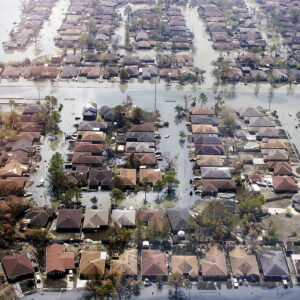
How wind and storm surge destroy buildings
How construction might improve this perennial issue
story by Mark Gokavi
published July 11, 2024
Buildings in the paths of Atlantic Ocean hurricanes should be built on pilings with special attention to strong connection points involving roofs, walls and foundations, according to a Colorado State University faculty member and structural engineer.
Michael O’Reilly, a master instructor in CSU’s Department of Construction Management, answered questions about how hurricanes destroy buildings, what can be done better in coastal construction, and if there is any structure that is “hurricane-proof.”
CSU hurricane researchers have predicted a well-above-average season in 2024 with 23 named storms, 11 hurricanes and five major tropical cyclones. Hurricane Beryl reached Category 5 status July 1, the earliest a recorded Atlantic Ocean storm has hit that status.
Given that this century has featured 15 of the 16 costliest hurricanes (based on the 2024 Consumer Price Index adjusted cost), the cycle of building, destruction and rebuilding also may increase.
O’Reilly, a CSU alum and 2014 Best Teacher award winner, began teaching CM’s structures class in 2001.
How does a hurricane decimate a structure?

Wind affects all sides and the roof of the building in different ways. The windward wall will “feel” pressure inward; the leeward wall will feel suction outward. The side walls parallel to the wind will feel suction outward. The leeward roof will feel suction outward; the windward roof can feel either pressure inward or suction outward, depending on the slope of the roof. Parts of the building such as corners, eaves, rakes and ridges can feel higher forces than the general building surfaces. In addition, if a window or door is destroyed, the interior of the building can be pressurized above atmospheric pressure, resulting in amplified forces affecting the walls and roof. On coastlines, wind-driven water in the form of “storm surge” can affect buildings by wave action impacting the walls.
Is the wind or water worse?
The big killer in hurricanes is water. Most fatalities are due to drowning in storm surge, not from the wind itself. By far the worst natural disaster in American history was the 1900 hurricane that swept through Galveston, Texas, killing more than 10,000 people in a single night, most by drowning in the unusually high storm surge. One way to “resist” storm surge is to build above it by elevating the building on pilings, so that the water passes under the superstructure.
How do buildings break apart in cyclones?
Most building failures in hurricanes are initiated at the connections: roof to walls, walls to foundation, etc. Having the right connection hardware installed in the correct ways at critical junctures was not mandated for older buildings. Modern hardware designed specifically to resist wind uplift, for example, did not exist when many older buildings were built.
Is there a standard wind speed structures should withstand?
There are no universal building standards related to wind speed. Different geographical locations and codes note varying wind speed standards and building requirements. Coastal structures in Key West, Florida, are designed for higher wind speeds than similar buildings in Savannah, Georgia. The wind speeds for different geographical locations are specified in the International Residential Code (IRC) for one- and two-family dwellings. Larger buildings are addressed by the International Building Code (IBC).
What about claims of hurricane-proof structures?
There are no hurricane-proof structures, only hurricane-resistant structures. Homes are typically framed with wood, because that is generally a cheaper alternative than an all-concrete building or a steel-framed building. Round structures might be more aerodynamically suited to resisting high winds. I emphasize “might” because I have not seen any research myself.
How important is a roof to the resiliency of a building in a hurricane?
Roofs are often the first parts of a building to go, primarily due to wind uplift and improper connection to the exterior walls. Lose the roof and you lose lateral support for the walls, and when they go, you lose the entire building.
Can existing structures be retrofitted to be more resilient?
Not usually without great expense. One interesting retrofit strategy used sometimes on mobile homes in high wind areas is to provide over-the-roof tie-down straps to new ground anchors or separately poured “deadman” footings.
Are there areas better off without human-made structures because they continue to get hit?
Definitely. Some coastal communities now even have regulations that prevent rebuilding too close to the ocean.
Are these lessons for building in hurricane-prone areas useful for building tornado-resilient structures and homes?
Certainly, but you are typically dealing with much higher wind speeds for tornadoes than for hurricanes.
What is the last word on hurricanes and homes?
When the authorities tell you to leave, LEAVE! There are plenty of risks in life worth taking, but death from high winds and possible storm surge isn’t one of them!
The Department of Construction Management is part of CSU’s College of Health and Human Sciences.





